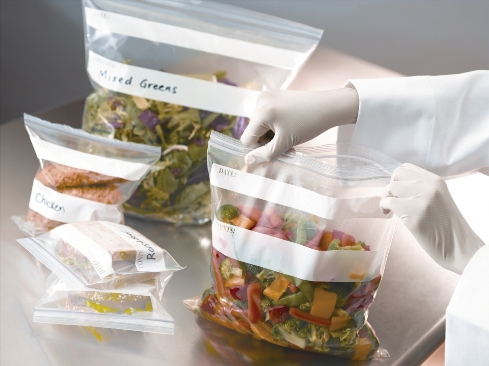Beyond Simple Compliance: Nurturing a Food Safety Culture in Your Team
In writing my last blog post, I was torn on addressing the issue of getting ready for a health inspection. I was torn, not because it isn’t an important topic, but because I didn’t want the reader who just stumbled upon the post and has not followed the FoodHandler blog previously to think I was promoting a reactive food safety program – one where we just get ready for the health inspection a month out from when we think that inspection might occur and forget about food safety the rest of the year. Deep down, I believe that food safety in retail foodservice establishments should be a proactive system, a system where we have developed a food safety culture among our team members.
Establishing a robust food safety culture within your establishment is essential for ensuring the health and well-being of your customers, maintaining regulatory compliance, and safeguarding the reputation of your operation. A food safety culture encompasses the shared values, beliefs, and behaviors that prioritize safe food handling practices at all levels of the organization. When we work with schools, we often talk about how the school system’s superintendent must buy into the food safety program, not just those managers and employees in the kitchen. In the restaurant setting, this means everyone from the general manager to bus persons.
A strong food safety culture begins with a visible commitment from leadership. What visibility means for your operation depends on the operation. Remember, it starts at the top and employees take their cues from the leaders. At the very least, we always say if you are a general manager and you want to promote food safety, but when you enter the kitchen and don’t wash your hands, what message does this send to your employees? When managers actively demonstrate their dedication to food safety, it sets a standard for the entire team. This also includes allocating resources for training, implementing comprehensive food safety policies, and fostering an environment where safety is prioritized above all else.
Investing in regular and thorough training is vital to food safety program success. Training ensures that staff members have the knowledge and skills to uphold food safety standards. Food safety training alone does not change on-the-job behaviors, but if you want employees to work toward changing behaviors, they must know the basics. Training should cover essential topics such as proper handwashing techniques, safe food storage practices, temperature control, and recognizing signs of foodborne illnesses. Understanding that knowledge alone isn’t sufficient; translating that knowledge into safe practices is key.
Food safety should not be viewed as a standalone requirement but as an integral component of your establishment’s core values.
Encouraging transparent and open communication allows employees to voice concerns, report potential hazards, and suggest improvements without fear of retribution. Regular meetings, feedback sessions, and anonymous reporting mechanisms can help in identifying and addressing issues before they escalate. This two-way communication fosters trust and reinforces the importance of collective responsibility in maintaining food safety.
Empowering employees to take ownership of food safety practices instills a sense of responsibility and pride in their work. Recognizing and rewarding safe behaviors can motivate staff and reinforce positive actions. Conversely, holding individuals accountable for lapses ensures that everyone understands the seriousness of food safety and the potential consequences of negligence.
Food safety should not be viewed as a standalone requirement but as a vital component of your business. By aligning food safety efforts with overall company objectives, you create a unified approach where every team member understands their role in maintaining these high standards. This alignment ensures that food safety becomes a natural and consistent part of daily operations.
Incorporating these strategies into the daily operation of your establishment can lead to a sustainable and effective food safety culture. In the end, remember that food safety is not a reactive program. A proactive approach helps mitigate risks and enhance the organization’s overall safety culture. Risk Nothing.
READ MORE POSTS
Routes of Foodborne Illness & Germs
From your sniffling coworker to the raw chicken on your kitchen cutting board, everyday life is full of potential infectious hazards. With germs so common and seemingly everywhere, knowing how germs spread is vital to preventing infection and foodborne illness. There are seven possible ways for the transmission of bacteria and viruses to take place. Although some of these microorganisms in our environment are good for us and protect us, disease causing pathogens are the germs or bad guys.
Handling Leafy Green Salad
We have had several produce outbreaks of foodborne disease from our lettuce, spinach, and other greens in the last several years that have been devastating to the produce growers and distributors, retail grocery stores, restaurants, and consumers.
Food Packaging Safety in a Vacuum
Extending the shelf life of fresh foods has come a long way in the food industry since curing meats with salt and sugar or canning vegetables with heat processing. The food service and consumer markets needed some better visual packages to draw the eye to the freshness factor and the technology of food packaging has filled our dinner plate. Vacuum packaging and modified atmosphere packaging, shortened to “MAP”, are the terms used for the method of food packaging used every time we choose convenience over more complex scratch meal preparation. According to industry statistics, billions of packages of vacuum and MAP-packaged foods flood the marketplace today. In both modified-atmosphere and vacuum packaging, food is packaged in a pouch made of barrier film.
The Eleven Commandments of Food Safety at Your Restaurant
Lists help us remember all kinds of information. Given the list of recent national foodborne outbreaks in the news, keep repeating this list to your food service team. They are kind of like “commandments”. As a professional in a food service facility we should think of the very basic food safety concepts that every crew member should aspire to learn, even though this list may have different priorities based on your menu. The first 3 apply to anyone who serves food, from a bag of popcorn to a full course meal. As chefs or managers, if we can “set the example” by repeating good food safety practices visibly to the crew, it will help them understand how important it is to the success of your facility. Thou shalt:










